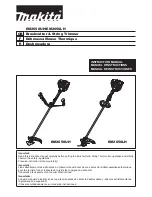
6
GB
This guide must be translated by the dealer into the language of the country of use (except if the translation is provided by the manufacturer). For your
own safety, you must strictly follow the usage, inspection, maintenance and storage instructions.
KRATOS SAFETY cannot be held liable for any direct or indirect accident occurring following use other than that provided for in these instructions;
do not use this equipment beyond its limits!
INSTRUCTIONS FOR USE AND PRECAUTIONS:
The MULTISAFEWAY is an anchorage point; it complies with standard EN 795:2012 Type A;
the mounting brackets (FA 60 022 01 and FA 60 022 02) must be fixed in/on a structure, whereas the lifting arm and the davit mast can be temporarily
installed. The lifting arm and the davit mast are transportable and can be mounted on different adaptation plates. The MULTISAFEWAY can only be
used by one person at a time, and is intended to be used to access confined spaces: tanks, silos, sewers, wells, etc., or when working on façades.
The “MULTISAFEWAY anchor” comprises a combination of at least three components: lifting arm + davit mast + mounting bracket. It can be fitted with
optional mounting brackets. Each component is described below. It is imperative that ONLY ELEMENTS MADE BY KRATOS SAFETY ARE USED.
Ref.
Description
FA 60 022 00
Lifting arm + Davit mast
FA 60 022 01
Ground mounting bracket
FA 60 022 02
Wall mounting bracket
MULTISAFEWAY also complies with Machinery Directive 2006/42/EC for lifting a maximum weight of 300 kg.
All the elements (pulleys, covers, safety pins, etc.) cannot be lost.
Can be used in three possible positions:
A = high position
B = middle position
C = low position
Fig. 1
(1)
(2)
(3)
(4)
(A)
(B)
MULTISAFEWAY’s various components:
The lifting arm
(1):
The lifting arm has two anchoring rings on its far end that are for attaching an EN363 fall arrest system (retractable fall arrester or
sliding fall arrester on flexible anchor line, etc.) and a hanging/rope access work system.
The end of the lifting arm is equipped with two end pulleys for cable passages, protected by a cover.
The other end of the arm can be fitted with an EN1496 Class A rescue lifting device [winch type – ref. FA 60 003 20 (20 m) or FA 60 003 30 (30 m)].
MULTISAFEWAY comes with the fasteners (screws with nuts) for mounting the winch on the lifting arm.
Lastly, the lifting arm is equipped with a return pulley located at the axis.
The lifting arm is indexable, and can be used in 3 positions (high, middle, low).
The davit mast
(2):
The mast can be fitted with an adapter plate [ref. FA 60 022 03 / FA 60 022 04 / FA 60 022 05], needed for installation of a retractable
fall arrester with a built-in EN1496 Class B rescue lifting device [ref. FA 20 401 10/S (10 m) / FA 20 401 20/R/S (20 m) / FA 20 401 30/S (30 m)].
The ground mounting bracket
(3)
: This fixture supports the davit mast, and is mounted onto a surface that is perfectly level. The assembly must be
perfectly stable.
The wall mounting bracket
(4)
: This fixture supports the davit mast, and is mounted onto a surface that is perfectly vertical. The assembly must be
perfectly stable.
Both of the mounting brackets are equipped with an indexing pin (button) that enables the davit to rotate 360 degrees. The davit must be immobilised
in a fixed position when in use.
The davit (lifting arm + mast) can be transported and used in different sites; however, the mounting brackets (wall or floor) must be permanently affixed
to a receiving structure.
INSTALLATION:
The receiving structure must be able to withstand stresses equivalent to 22.1 MPa or 22.1N/mm2. The fasteners/structural anchors must be strong
enough to handle this strain. They must be stainless steel, size M16, class A470 (minimum).
Using the nature of the receiving structure and the site’s configuration, an engineer must run calculations to determine that the sizing of the structural
anchors (length), the type of fixture (chemical or mechanical fasteners, etc.), the position of the structural anchors, and thus of the mounting bracket,
are all correct.
Once the mounting bracket has been installed: pull the indexing pin on the plate and rotate 90°, install the davit mast, and push the indexing pin back in.
Install the lifting arm by first inserting the safety pin in line with the davit mast. Choose a position for the lifting arm (high, middle, low) as shown in the
diagram in Fig. 1, then insert the second safety pin. The davit is ready for use.
If you install a winch (A) [ref. FA 60 003 20 (20 m) or FA 60 003 30 (30 m)]: use the fasteners provided for this purpose (M nylon ring nut)
(Fig. 2 & 3, see p. 3), unroll the cable to the end of the lifting arm, remove the safety pin (Fig. 4) and lift the cover, then carefully thread the cable through
the end pulley (Fig. 5), close the cover, and insert the safety pin.
If you install a retractable fall arrester with a built-in EN1496 Class B rescue lifting device [ref. FA 20 401 10/S (10 m) / FA 20 401 20/R/S (20 m) / FA
20 401 30/S (30 m)]: place the adaptation plate (B) (ref. FA 60 022 05 for the 10 m, FA 60 022 04 for the 20 m, ref. FA 60 022 03 for the 30 m) on the davit
mast using the two holes intended for this purpose (Fig. 6a, 6b), install the fall arrester on the plate (Fig. 7 & 8 - see adaptation plate installation guide),
Summary of Contents for MultiSafeWay FA 60 022 00
Page 20: ...20 NOTES...







































